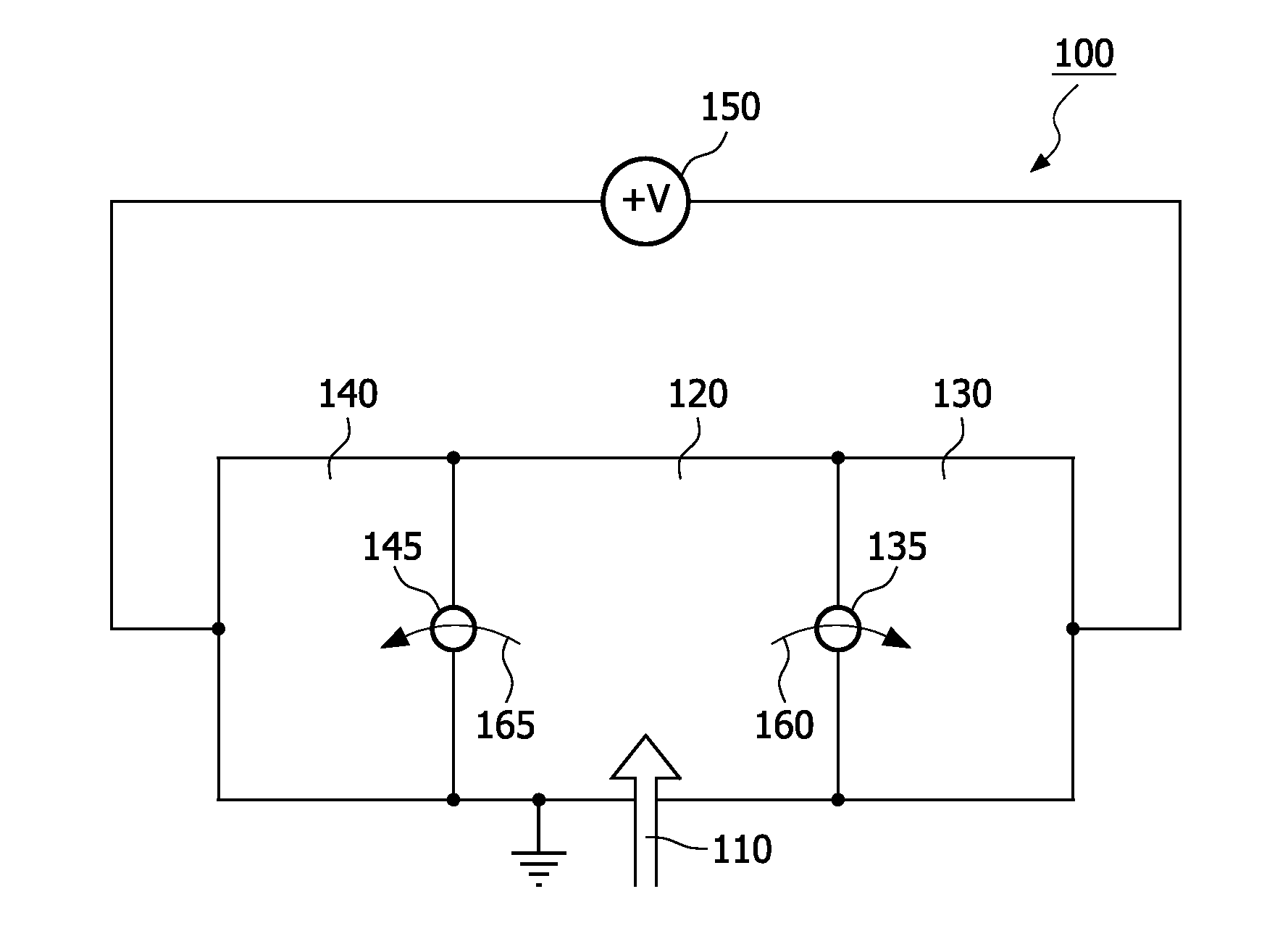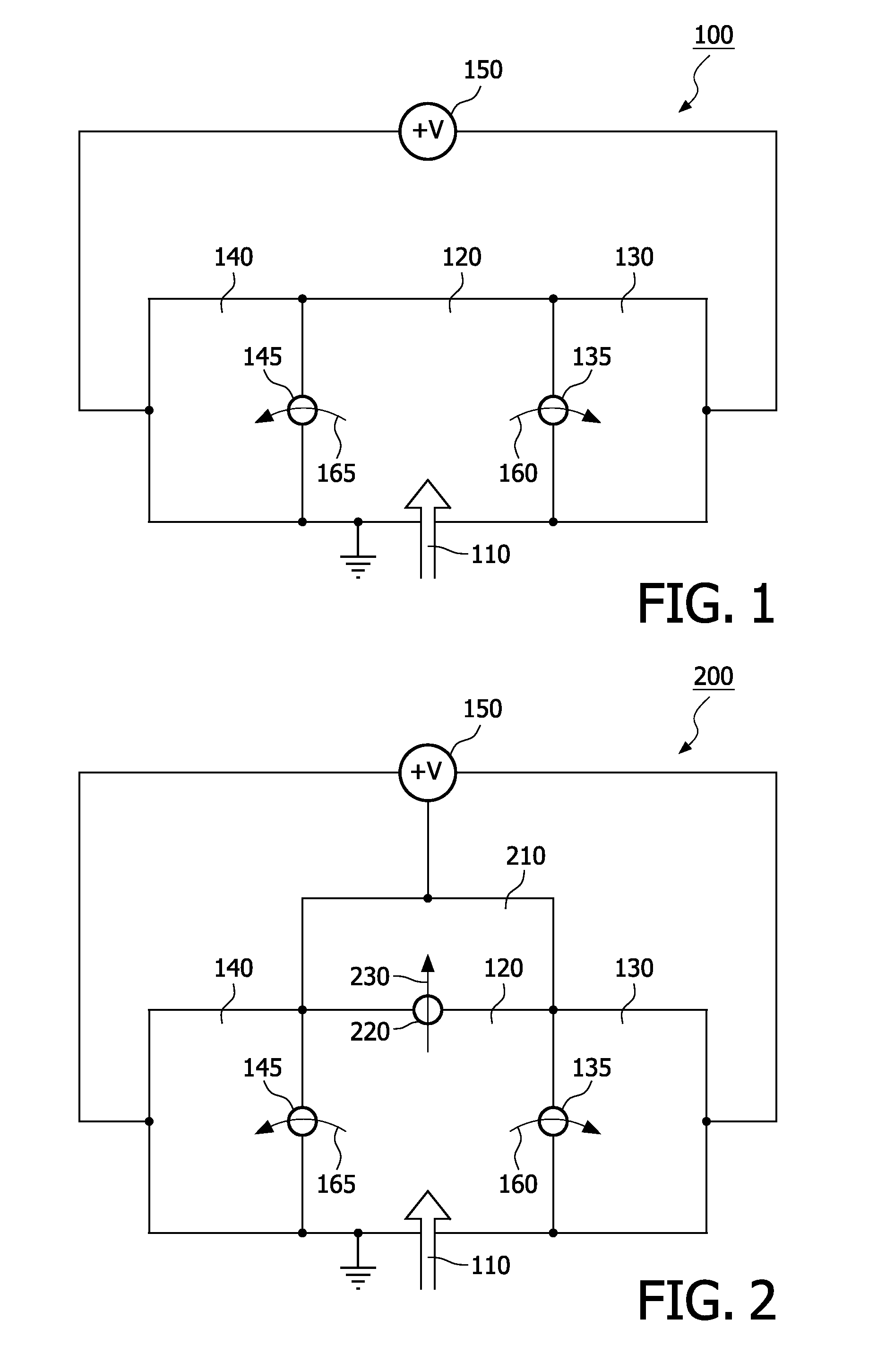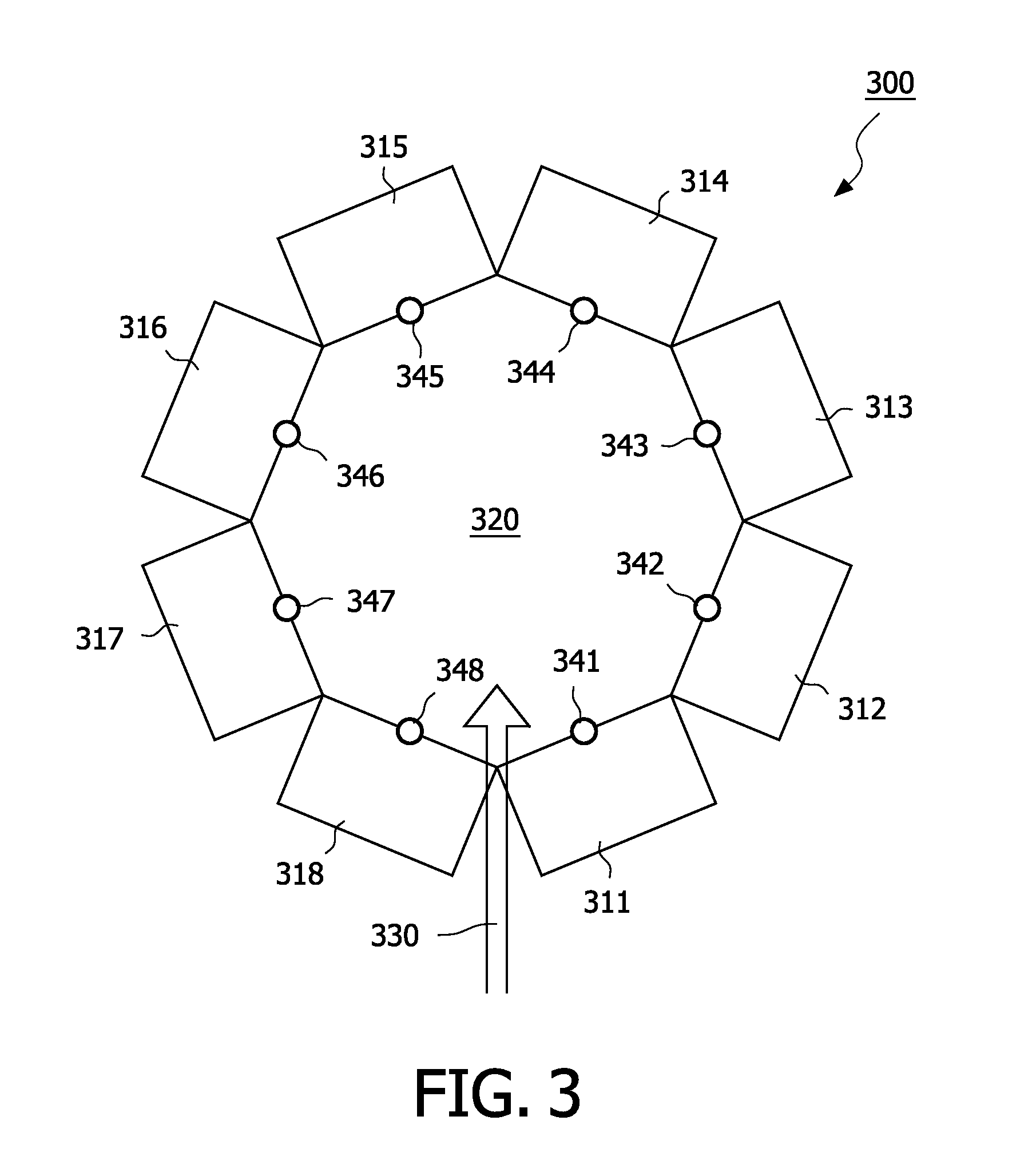Nanopore device and a method for nucleic acid analysis
- Summary
- Abstract
- Description
- Claims
- Application Information
AI Technical Summary
Benefits of technology
Problems solved by technology
Method used
Image
Examples
Embodiment Construction
[0082]FIG. 1 depicts a nanopore device 100 according to the invention. The device comprises a sample input 110 for inputting a sample of nucleic acid material (not shown), such as DNA, RNA or uRNA, which is prepared into small fragments (not shown), into an input chamber 120. For DNA these small fragments have a negative electric charge. The input chamber 120 is arranged to be connected to a first sample chamber 130 via a first nanopore 135 and to a second sample chamber 140 via a second nanopore 145. The nanopores 135, 145 further comprise specific detection molecules (not shown) which are tailored to the required detection function of the nanopore. An electrolytic solution (not shown) is present in the chambers 120, 130, 140 and comprises charged particles. Means to apply an electrical potential difference 150 are arranged so that an electrical potential difference is present across both nanopores 135, 145. (This means to apply an electrical potential difference is shown here as i...
PUM
| Property | Measurement | Unit |
|---|---|---|
| Current | aaaaa | aaaaa |
Abstract
Description
Claims
Application Information
 Login to View More
Login to View More - R&D
- Intellectual Property
- Life Sciences
- Materials
- Tech Scout
- Unparalleled Data Quality
- Higher Quality Content
- 60% Fewer Hallucinations
Browse by: Latest US Patents, China's latest patents, Technical Efficacy Thesaurus, Application Domain, Technology Topic, Popular Technical Reports.
© 2025 PatSnap. All rights reserved.Legal|Privacy policy|Modern Slavery Act Transparency Statement|Sitemap|About US| Contact US: help@patsnap.com



